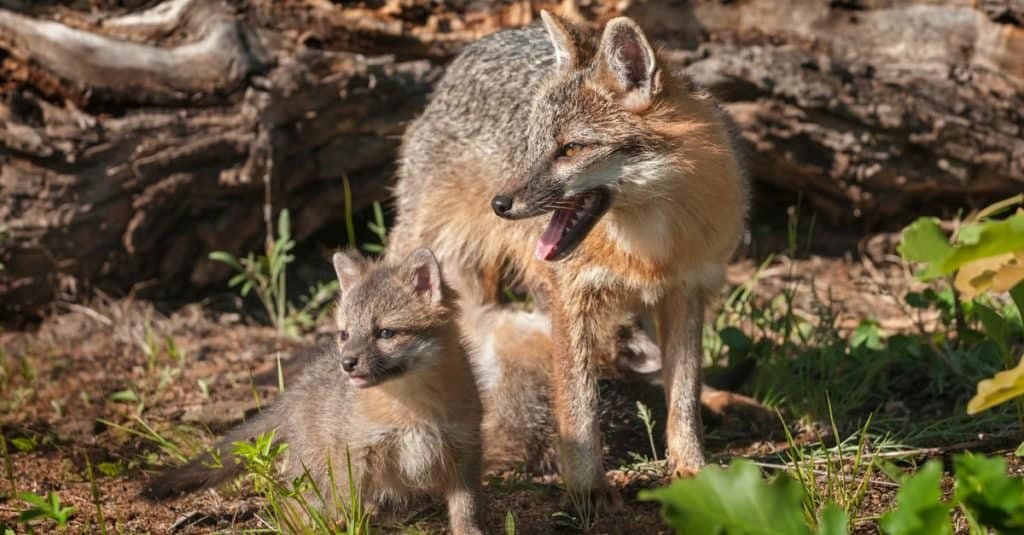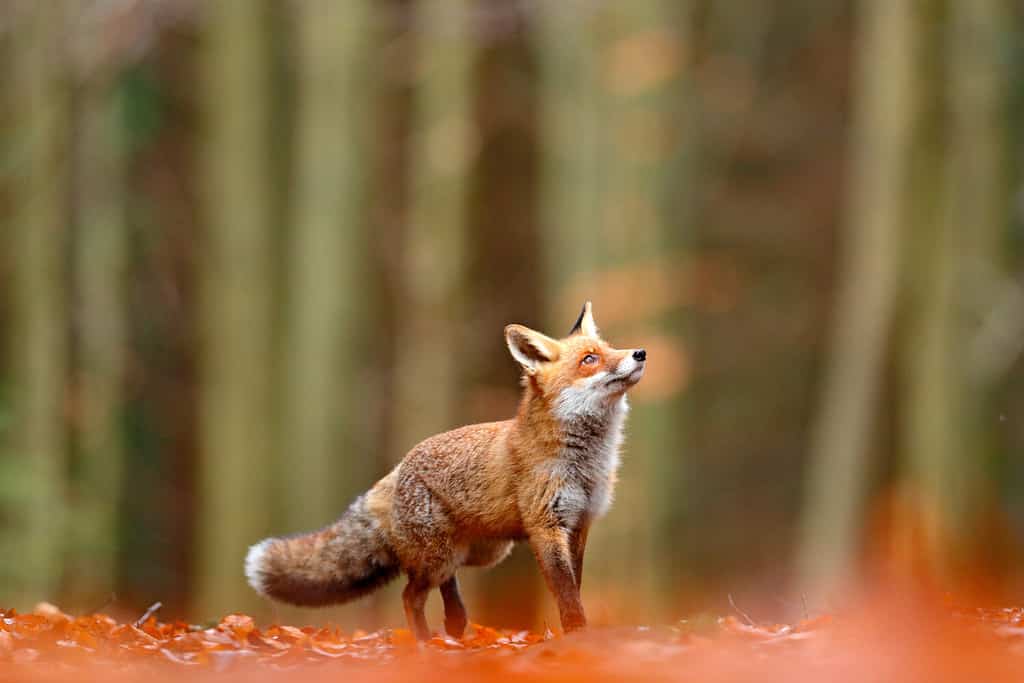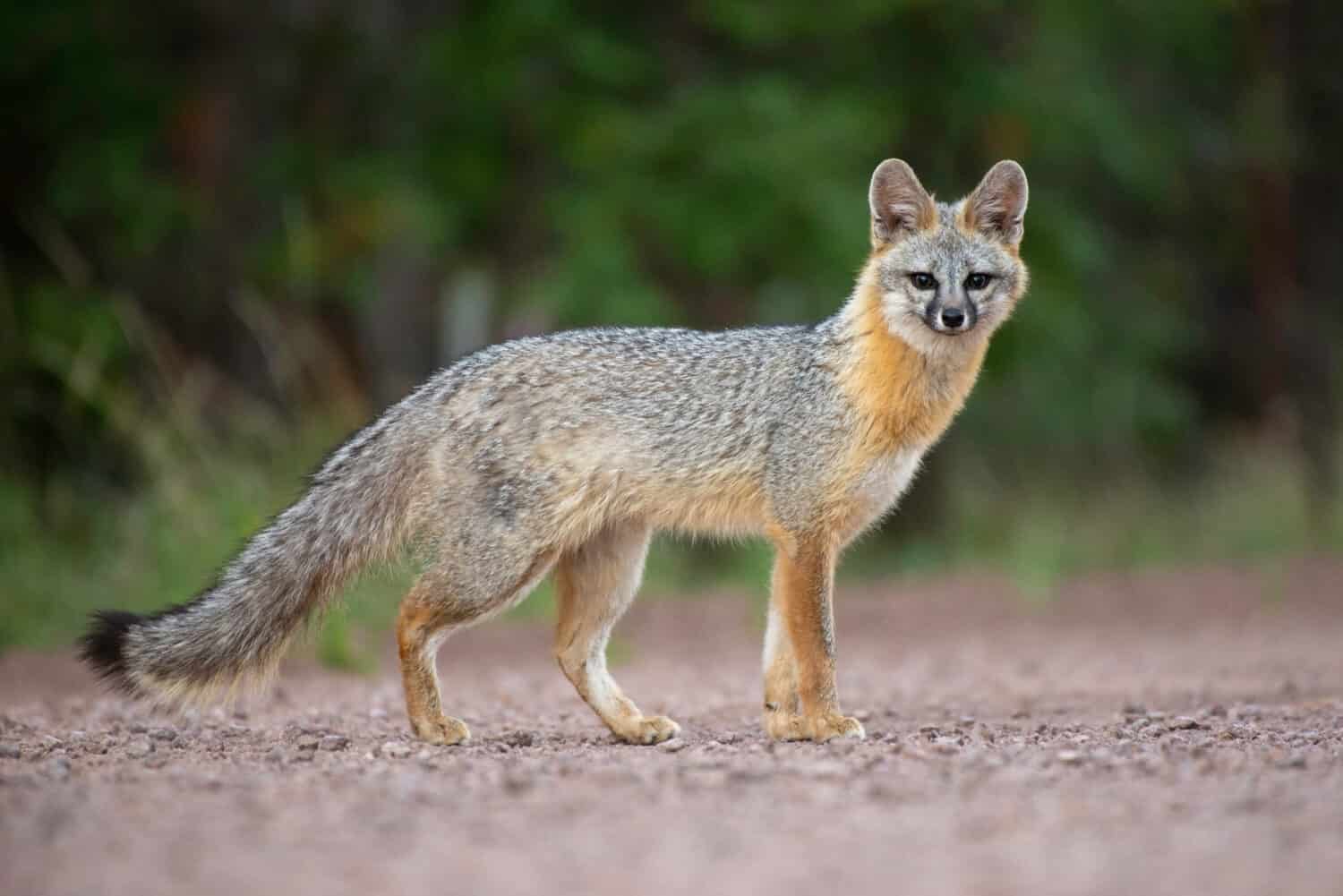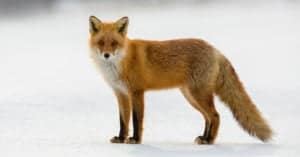There’s nothing quite as majestic as seeing the noble fox as it comes out the woods to explore the world around it. Foxes are incredibly resourceful creatures that often act as the protector of the forest, and there are several different fox species in the midwest. Today, we’ll discuss the foxes in Wisconsin. We’ll tell you about their breed, where they spend their time, and other fun facts that you can tell your friends.
Are There Foxes in Wisconsin?
Yes, there are two primary members of the fox family in Wisconsin, and they are the gray fox and the red fox, both of which are in the canine family. They are fascinating creatures and they have more differences than just the color of their fur. Among them are the places that they spend their time, their classification, how they hunt, and their fearfulness of humans. Let’s discover more about these two species and what makes them so special.
Gray Foxes in Wisconsin (Urocyon cinereoargenteus)

The gray fox is found in southern Wisconsin but you’ll have to go out night to try and see one.
©Holly Kuchera/Shutterstock.com
The gray fox is a curious creature. As the name suggests, gray foxes have a mix of gray and white fur on their throats and chin and brown undersides. Many also have a black stripe down their tail. They typically weigh about 4-5 pounds.
You’ll typically find the gray fox in Southern Wisconsin, near places like Kenosha, Milwaukee, and Racine. Basically, anywhere below the midpoint of the state. Your best chance of seeing a gray fox is at night since they are primarily nocturnal creatures.
Out of the two breeds, gray foxes are typically harder to spot because they are generally a more reclusive animal that often comes out at night. They’re typically out hunting and exploring during late evening until early dawn. They carry these reclusive habits over into their hunts as they’ll typically spend a lot of time searching for prey while climbing trees and jumping from branch to branch.
The gray fox is also typically a monogamous breed, which means it will stick with the same mate during the entirety of the mating season. Females will have liters of four to five babies on average.
Gray Fox Diet
The gray fox is a solitary creature but it’s not afraid to let out a bark or growl when communicating with family or when approaching its prey. The primary diet of the gray fox is smaller mammals, like mice, voles, and cottontail rabbits. They’re also known to eat insects and birds, and they won’t shy away from berries, corn, apples, and nuts.
Life Span
The gray fox will typically live between 7-10 years, though they’ve been known to live longer. The predators that are typically a threat to a gray fox are coyotes, eagles, bobcats, and owls. Unfortunately, they’re often hunted quite regularly for their fur. Still, even with the numerous threats, gray foxes are not endangered. They are considered to be of “Least Concern” on conservation lists.
Surprising Facts About the Gray Fox
- Unlike the other animals in the canine family, the gray fox has semi-retractable claws. They only come out when they’re hunting prey or climbing trees. The main reason for the retractability is that they’re able to keep their claws sharper for longer.
- Gray foxes are also the only canine that can climb trees.
- This breed typically won’t venture more than 1-2 miles away from its den.
- The gray fox is the smallest canine found in the entire state of Wisconsin.
Red Foxes in Wisconsin (Vulpes vulpes)

The red fox is found all over Wisconsin but you’ll still likely need to go out in the evening to see one.
©Ondrej Prosicky/Shutterstock.com
The red fox is what most people envision when they think about foxes in Wisconsin, mostly because of their red fur, longer snout, and a bushy tail that ends in a white tip. Note that not all red foxes are this shade. There are variations, including those with silver and black fur and a cross between red and silver. They typically range from 3-4 feet in length. They’re smaller animals that typically don’t weigh more than 9-12 pounds. However, they can appear larger due to their thick fur.
You’ll find the red fox throughout the state of Wisconsin, from the northern point of Eagle River to Kenocia in the south. For the best chance of a sighting, head south, west, or stay in central Wisconsin.
Though the red fix is also a solitary creature like the gray fox, it’s less afraid to be out in public. In fact, red foxes are often spotted by the people of Wisconsin because they’ll go out into suburban, urban, and rural areas, and they’ll even hang around buildings.
Red foxes are not as vocal as gray foxes. They typically depend on a variety of vocalizations and facial expressions. They can also find their way through their excellent sense of smell and touch.
Red Fox Diet
Like its gray relative, the red foxes diet mostly consists of small mammals, including rabbits, birds, and squirrels. The fox also isn’t afraid to eat the waste left over in our garbage cans, similar to the racoon.
The red fox has many attributes that make it a great hunter. It has large ears that allow it to hear prey rustling in the bushes nearby within one degree of its location, so it can pounce with almost exact certainty. Like the gray fox, the red foxes in Wisconsin do most of their hunting during the nighttime hours. They’ll typically be out from two hours before sunset to four hours after sunrise. Unlike the gray fox, the red fox will travel further from home base, and it’s not uncommon for them to travel up to nine miles before retreating back.
Life Span
The red fox typically lives a long time, typically for 10 to 12 years, but when it’s fending for itself, that life span can be greatly reduced. The sad fact is that most foxes are eaten when they’re young animals. As adults, they’re still under attack by wolves, coyotes, and other large predators. Like the gray fox, the red fox is greatly at risk by humans. However, they’re not on any endangered animal lists.
Surprising Facts About the Red Fox
- Red foxes are incredibly energetic and agile. They can jump over six feet high, they can swim, and they have a maximum running speed of about 31 mph.
- Red foxes seem long but in addition to their fluffy fur, half of their body is also made up of their tail.
- The front paws of the red fox have five toes while their hind legs only have four toes each.
- Like the gray fox, they are monogamous creatures that often stay with their same mate for most of their lives.
Other Animals Found in Wisconsin
The state of Wisconsin has a lot of rural and farm land, and so there are many other creatures other than foxes that roam the landscapes. Spend enough time in the forest and you’re likely to come across elk, deer, wolves, and perhaps even a bear.
Look up in the sky to see the majestic bald eagle, mourning doves, snowy owls, and several varieties of grouse. The lakes are also full of a variety of fish, from bass and crappie to bluegill and trout. Consider a camping trip in The Badger State. You won’t be disappointed.
Concussion
So there you have it, the two main foxes in Wisconsin: the red and the gray fox. As a final fun fact, although these adorable creatures are very savvy and they appear loveable, they are still wild animals that should not be kept as pets. Keep an eye out for either one of these fox breeds the next time you’re out at night in Wisconsin.
Thank you for reading! Have some feedback for us? Contact the AZ Animals editorial team.








